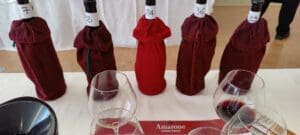After taking two weeks break for Chinese New Year, it is time for me to get back in business. During this period, I took some time to look through the alcohol tax figures released in late January by the custom authority. Now this makes a good trivia question, do you know how much volume we drink in a year?
When I said I am getting involved in the wine industry, many thought I will be opening a shop and start doing retail business. Sorry to disappoint, but doing sales isn’t my forte. But most importantly, before anyone, with an impulsive mind and fat wallet, wants to jump into this business they ought to have a more realistic view of the alcohol market.
Halfway looking through the numbers, I am half grateful for alcohol levy in Singapore. The statutory need for businesses to declare their volume of imported alcohol means I need not work in ports, looking through containers and counting bottles. Unfortunately this doesn’t capture the exact downstream numbers in the sales aspect. So for a start, let’s have a look at diagrams to have an overview of the duty paid alcohol market.
[visualizer id=”26529″]
Beer! Everyone’s favourite booze. Consider the warm weather and high retail availability, this came as no surprise. Pubs, supermarkets, neighbourhood groceries stores and convenience stores are well established sales channels for canned beer. Adding to the list are several microbreweries and specialise beer (water)holes.
[visualizer id=”26530″]
But we can’t have a good perspective of market share if we keep beer in the chart. So I took it out and we have Still Wines taking up close to half the market share while sparkling wines represent 6.4%.
[visualizer id=”26525″]
[visualizer id=”26527″]
Looking at the year-on-year growth and current position of our market, it seems to suggest growth is slowing down and that possibly means two things. Consumers are happy with what they have, or simply uninterested with what’s being offered by current players. The highest growth we see comes from Sparkling Wines in 2010, a whopping 22.37% growth!
But there is also sign of good news showing in the same report. Cumulative volume for Still Wines between June and December 2013 were at 4,933,886 litres. Assuming half-yearly volume represents an unbiased 50%, then 2013 should amount to 9,867,772 litres or a 10.45% growth. With the same assumption, 2013 Sparkling Wines volume estimates at 1,124,426 litres or 7.4% growth.
Can the market do better with more players? Depends. I believe what is in demand is novelty and low prices. If new players can excite the market with quality offering like wines from South Africa, Argentina or Greece. Then they might stand a chance in the long run. If it is the same old deal, they better not come on board.



